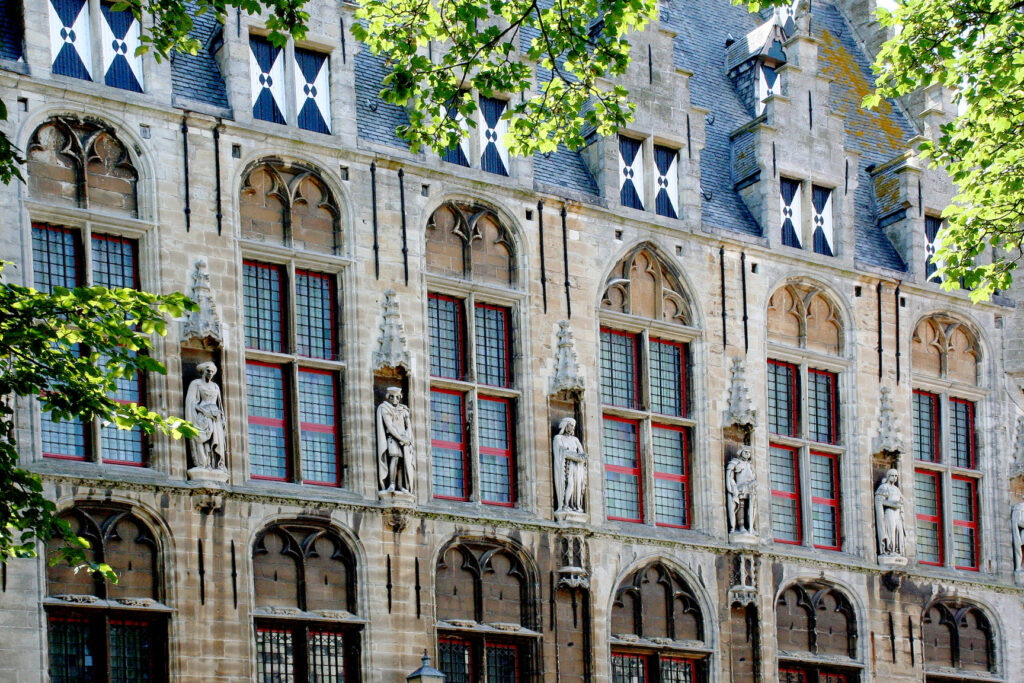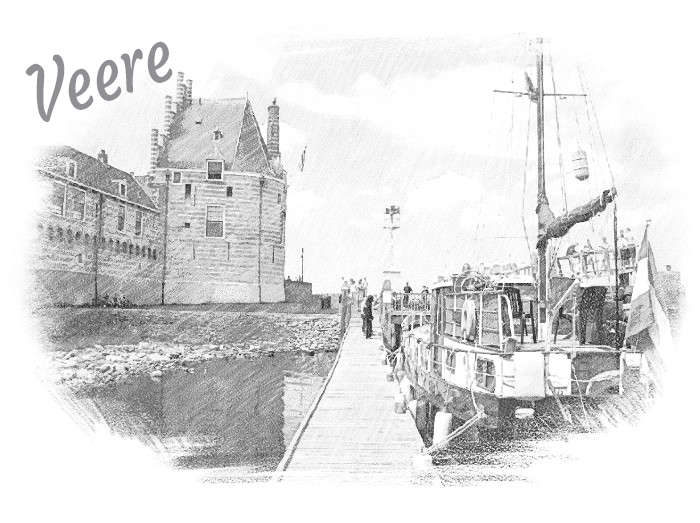
The town is a haven for water sports
Veere is a quaint town that encapsulates the charm of a bygone era while offering a serene escape for modern travelers. Situated on the shores of the Veerse Meer lake, this historic port town is a testament to Holland’s rich maritime heritage.
Veere’s cobblestone streets, historic buildings, and picturesque harbor evoke a sense of nostalgia. Its iconic 15th-century town hall and the imposing Grote Kerk (Great Church) stand as witnesses to centuries of Dutch history. The town’s maritime legacy is palpable at the Museum Veere, which showcases the region’s seafaring history and its role in trade and exploration.
The allure of Veere extends beyond its architectural marvels. The town is a haven for water sports enthusiasts, offering opportunities for sailing, windsurfing, and kayaking on the tranquil Veerse Meer. Visitors can also take leisurely strolls along the waterfront, enjoying panoramic views and soaking in the serene atmosphere.
Veere’s unique blend of history, natural beauty, and maritime significance make it a must-visit destination in Holland. Whether you’re captivated by its maritime past, enchanted by its cobblestone streets, or simply seeking a peaceful retreat, Veere welcomes all with open arms, inviting them to experience the magic of a town that has gracefully preserved its heritage while embracing the present.

In the Eighty Years’ War Veere was Spanish-minded, until in 1572 on 4 May a group of beggars stood at the gates and the Capture of Veere was a fact within a day.
From 1572 Veere, together with most other Walcher cities, joined the revolt against the rule of Alva. In the Republic, the city occupied a prominent position. During the Batavian Republic, Veere became a (poor) fishing port instead of a trading city.
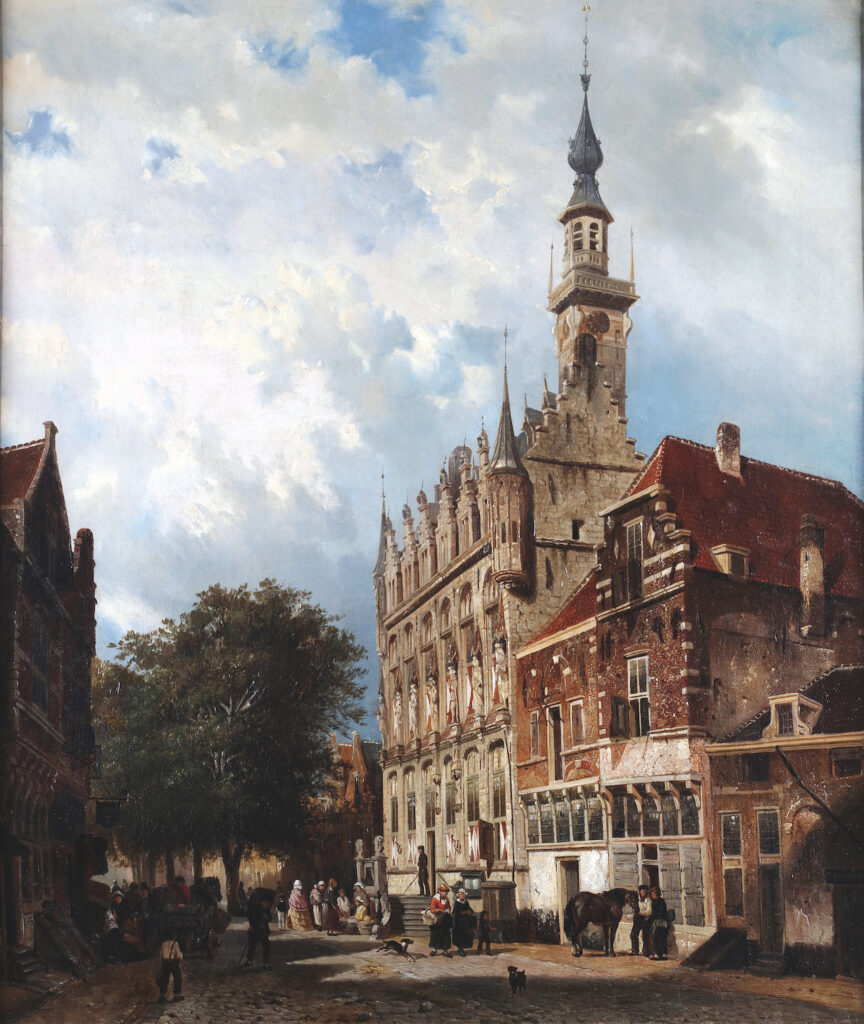
De Koe is a flour mill
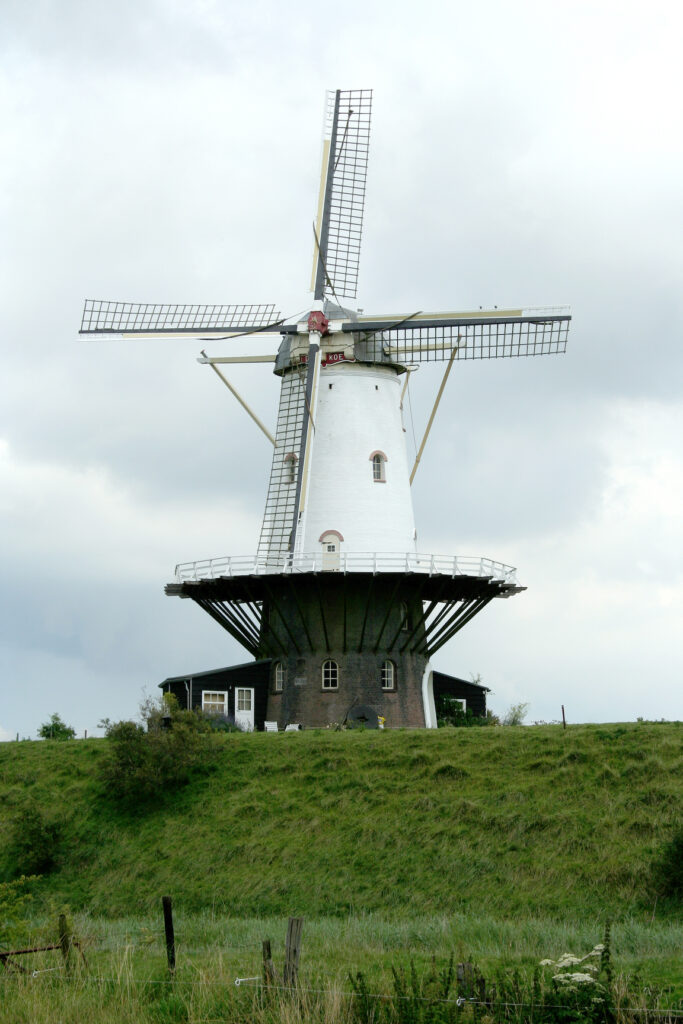
The Koe (cow) is a flour mill on the Warwijcksestraat on the outskirts of Veere.
It is a round brick scaffolding mill from 1909 and whitewashed in the Zeeland tradition. The mill is covered with zinc and has a flight of 23.50 meters. It is an iconic mill that is clearly visible from all sides. The Cow is grinding.
RECREATION ON THE VEERSE MEER
Veere was originally called Kampvere; it was the place where the ferry left from Walcheren to Noord-Beveland.
The ferry sailed to the village of Campen, which drowned in 1530, later to Kamperland. The Campveerse Toren reminds with its name of this ferry. The closure of the Veerse Gat in 1961 made the ferry superfluous, but also meant the end of Veere as a seaport. Afterwards, the Veerse Meer developed into an important recreational area with a lot of pleasure boating.
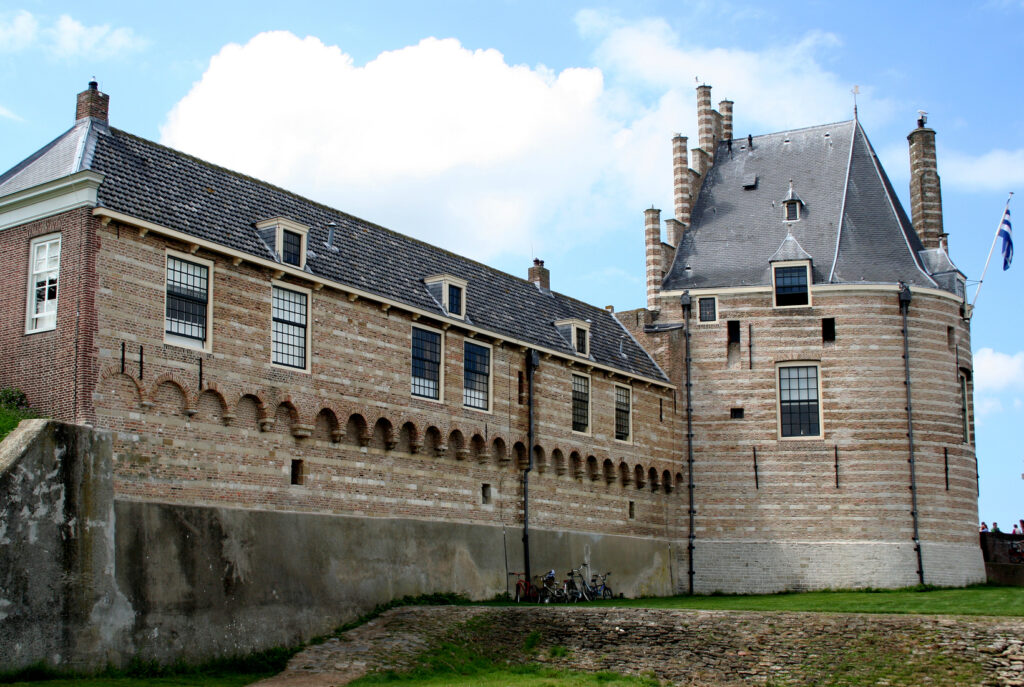
The Campveerse Toren was built in the 15th century as a defensive tower. However, according to tradition, the property is also home to one of the country’s oldest inns.
After the death of his first wife, William of Orange wanted to marry again. He had a lot of debts and so he ended up with Charlotte de Bourbon who belonged to the high French nobility. Charlotte herself had suffered some reputational damage. The marriage gave her the opportunity for an honorable existence. The wedding anniversary of William of Orange and Charlotte de Bourbon took place on 21 June 1575 in the Campveerse Toren in Veere. This is one of the oldest inns in the country – housed in a tower that was once part of the city’s fortifications.
Church of Our Lady
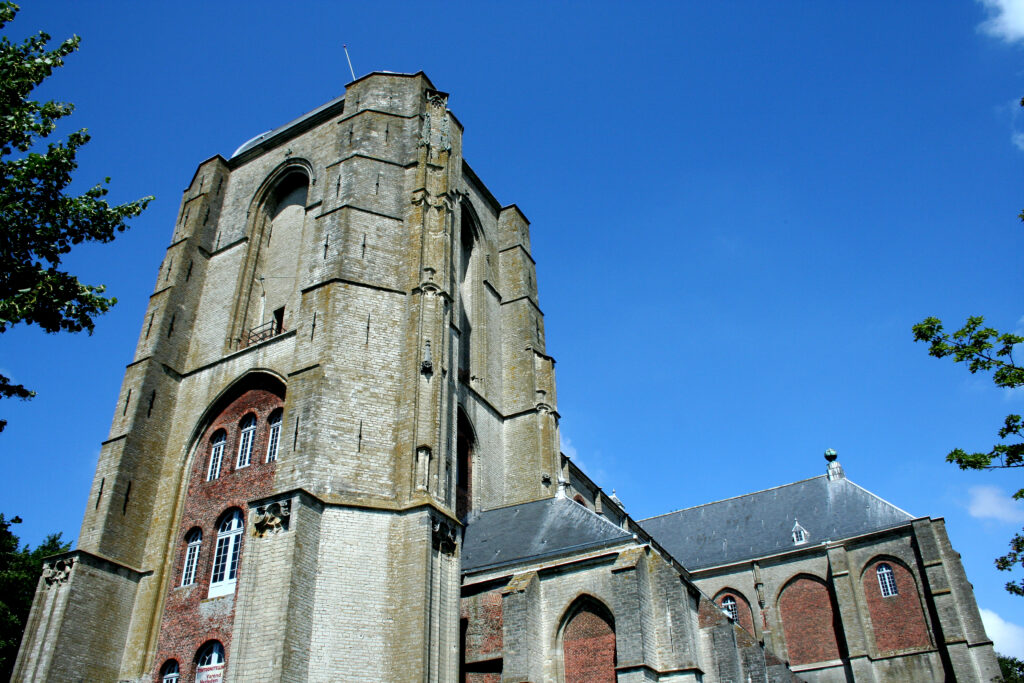
In September 1809, during the English landing on Walcheren, the Church of Our Lady was also bombed.
The church was then used by the English as a barracks and hospital. The latter was necessary because as a result of the infamous Zeeland fever, many soldiers became ill.
STABLES
After the English left in December of the same year, the building fell into French hands. The French then converted the church into a horse stable and hospital. The interior was completely removed, the Gothic windows were largely bricked up and four floors were laid in the building. The many French soldiers who died in the hospital are buried in the nearby Kattepolder.
PLACES
After the departure of the French in 1814, the former church came into use as a workhouse for beggars from 1823 to 1829. At the time of the secessionist troubles with Belgium, the building became a hospital again from 1823 to 1829, but this time for the Dutch army.


On the shield is a heart shield where the sail of the cog ship belongs. This heart shield is the coat of arms of Borssele, to be precise the coat of arms of the Van Borssele family. A number of Van Borsseles later also became gentlemen or women of Veere.
2 towers, between which lies a boat, diagonally behind the left tower, all of gold; the towers rose from a sea of natural color, and on each a customary half-hatching savage of the same, armed with a club, and holding by hand each an end of a ribbon, on which hangs a shield of sabre, laden with a crossbar of silver.
TOWN HALL
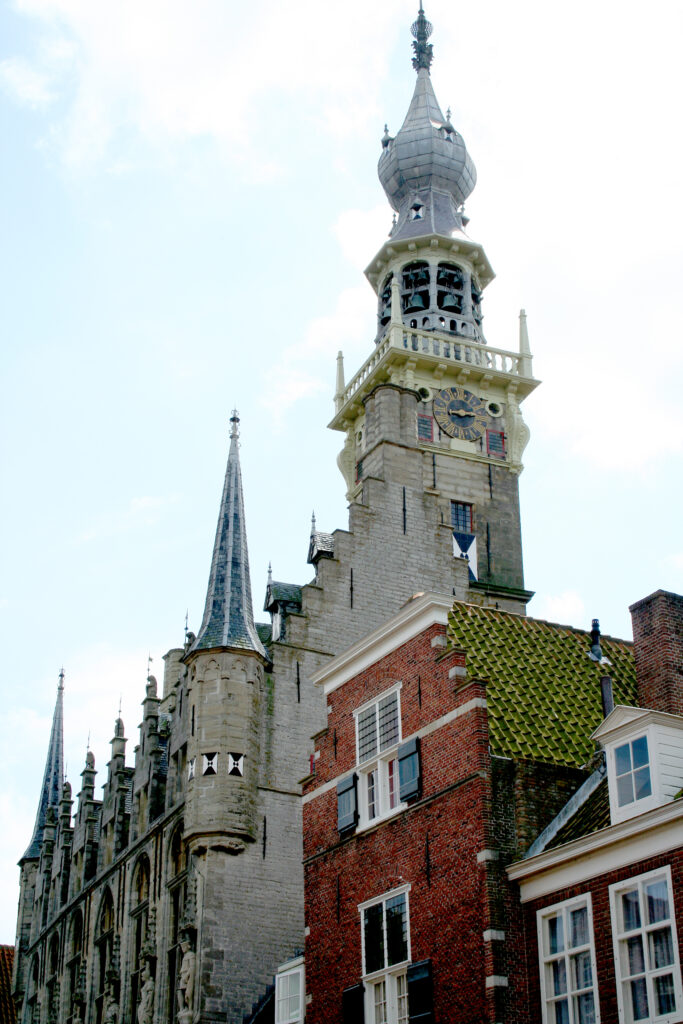
The Town Hall of Veere is a town hall on the Markt in Veere in Zeeland.
It is a late Gothic building with statues of the four gentlemen and three women of Veere in the façade. On the ground floor is the ‘De Vierschaar’, where justice was administered by the city council until 1811. Today it is the antiquity room with, among other things, the silver cup of Maximilian of Burgundy.
The Scottish Houses
Museum Veere is established in two beautiful historic buildings:
The Scottish Houses along the quay and the monumental City Hall on the Market. Together they bring the stirring history of this small city of Veere to life. The unique 16th century statues that once adorned the façade of the City Hall are part of our collection and on display in our Statue Hall. The famous gilded goblet of Maximilian shines in the old council chamber.






